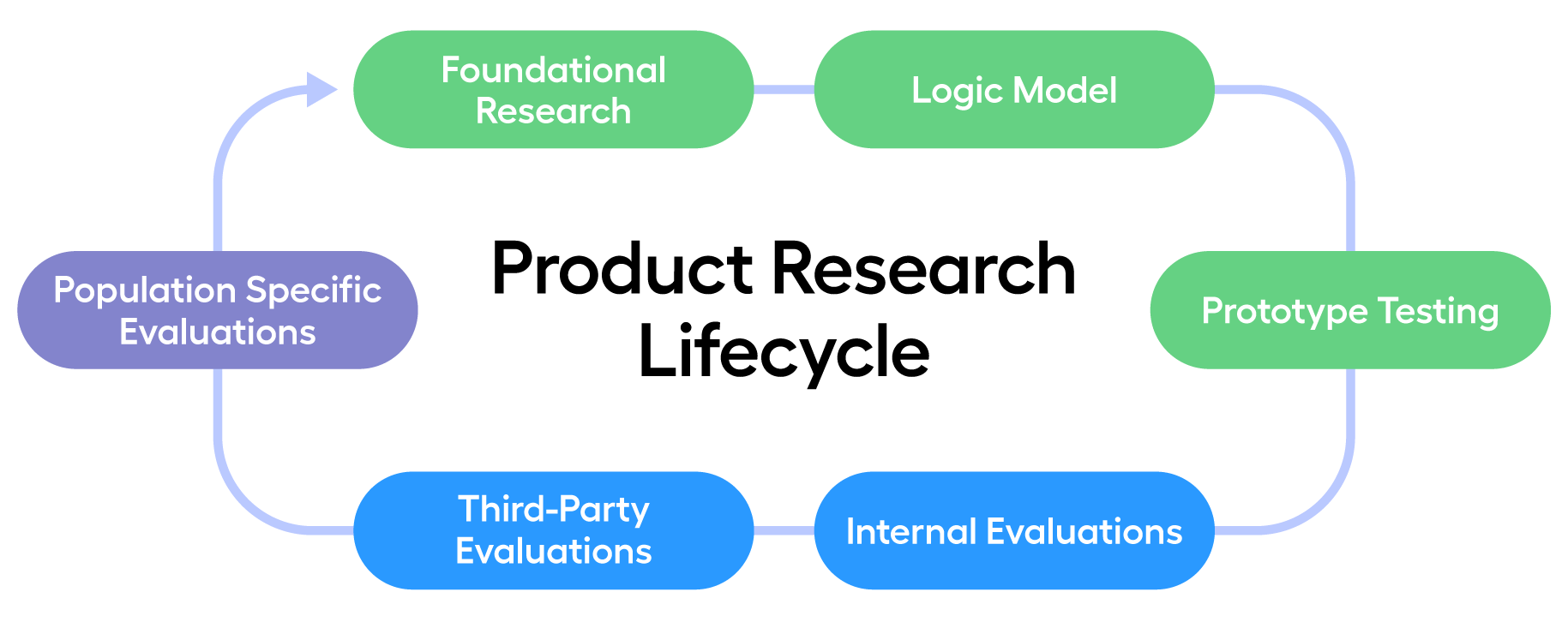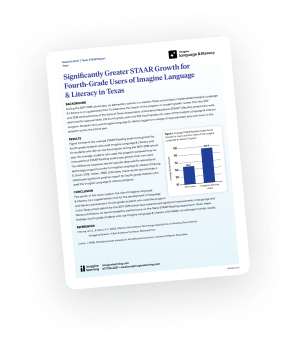Research and Evaluation
Imagine Learning continuously measures the impact of programs on student success and uses those insights to improve student outcomes.

Optimizing Learning Outcomes
As an organization that develops learning solutions used by millions of students throughout the nation, Imagine Learning recognizes and embraces the critical responsibility of building the highest quality learning solutions. We prioritize regular and rigorous research to ensure we continue building our programs on the foundation of modern learning science principles and optimizing student learning outcomes.
Research Strategy
Building highly effective learning solutions requires a substantial amount of research and evaluation throughout the product development lifecycle. Research during product development informs key decisions about a product’s instructional design, intended outcomes, and overall theory of change. Post-development evaluations inform product enhancements and demonstrate effectiveness in multiple contexts and settings.


Product Research Lifecycle
Build Effective Programs
Imagine Learning utilizes current education research to build our programs on foundations of effective learning design principles, confirmed instructional practices, and validated approaches for learning.
We also design logic models to articulate the interrelationship between program features, implementation activities, and intended student and teacher outcomes.
Prior to full product release, our research team conducts rigorous pilot research to measure anticipated student learning outcomes. Research results are incorporated into final product enhancements to maximize product efficacy.
Evaluate Program Impact
Internal research evaluations provide Imagine Learning district partners with important insights regarding the impact of Imagine Learning programming within their schools.
Annual, third-party evaluations commissioned by Imagine Learning document the impact of our programs on student achievement on a larger, more generalizable scale. These external partnerships ensure that our research is rigorous, unbiased, and fully aligned with federal research standards.
Generalize Results
Imagine Learning products are used by a highly diverse population of students attending school districts in all regions of the United States. Partnering with school districts across the nation, we regularly design studies that measure the impact of our products across different student populations, regions, and implementation models. In doing so, we learn how Imagine Learning programs can and will serve students in a variety of demographic and implementation contexts.
Research is always contextualized, and generalization of results should be made based on similarities between the contexts where research is conducted and the settings in which products are used. To support such generalizations, Imagine Learning describes demographics and local conditions in ESSA-aligned research.
